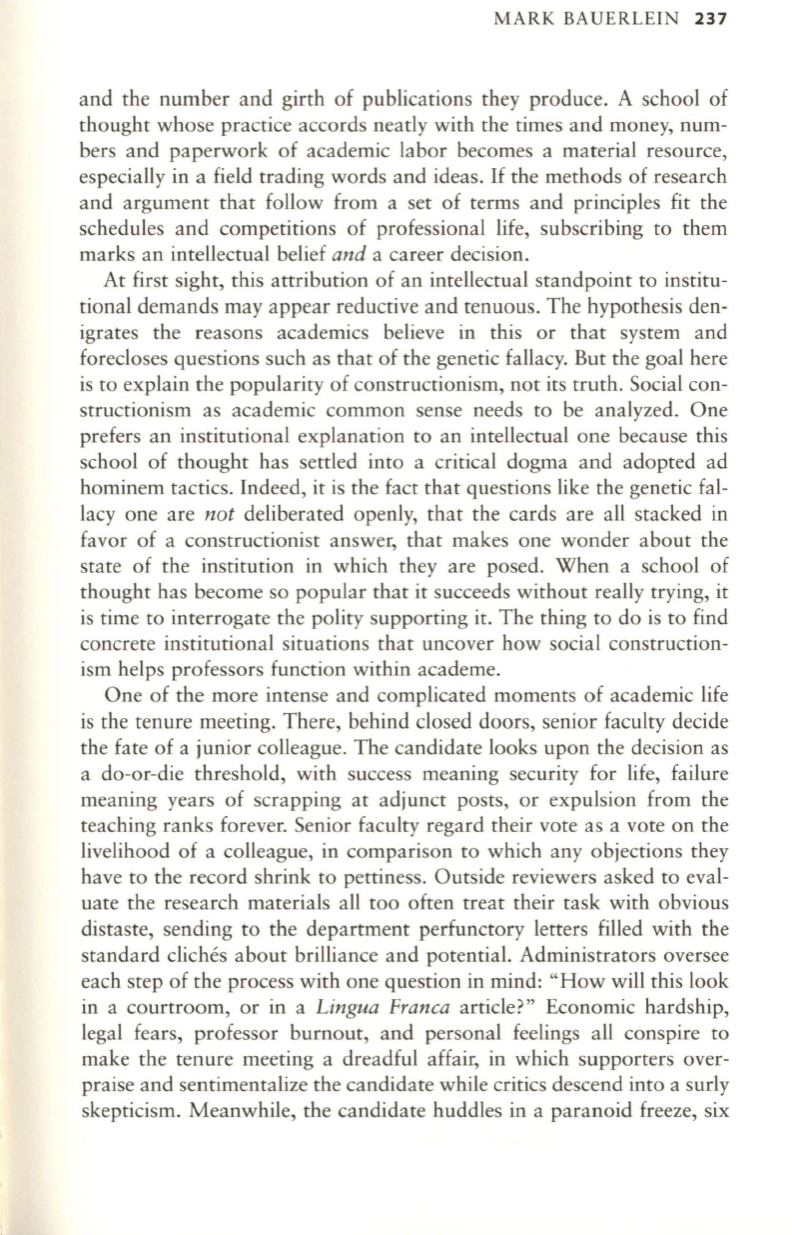
MARK BAUERLEIN
237
and the number and girth of publications they produce. A school of
thought whose practice accords neatly with the times and money, num–
bers and paperwork of academic labor becomes a material resource,
especially in a field trading words and ideas.
If
the methods of research
and argument that follow from a set of terms and principles fit the
schedules and competitions of professional life, subscribing to them
marks an intellectual belief
and
a career decision.
At first sight, this attribution of an intellectual standpoint to institu–
tional demands may appear reductive and tenuous. The hypothesis den–
igrates the reasons academics believe in this or that system and
forecloses questions such as that of the genetic fallacy. But the goal here
is to explain the popularity of constructionism, not its truth. Social con–
structionism as academic common sense needs to be analyzed. One
prefers an institutional explanation to an intellectual one because this
school of thought has settled into a critical dogma and adopted ad
hominem tactics. Indeed, it is the fact that questions like the genetic fal–
lacy one are
not
deliberated openly, that the cards are all stacked in
favor of a constructionist answer, that makes one wonder about the
state of the institution in which they are posed. When a school of
thought has become so popular that it succeeds without really trying, it
is time to interrogate the polity supporting it. The thing to do is to find
concrete institutional situations that uncover how social construction–
ism helps professors function within academe.
One of the more intense and complicated moments of academic life
is the tenure meeting. There, behind closed doors, senior faculty decide
the fate of a junior colleague. The candidate looks upon the decision as
a do-or-die threshold, with success meaning security for life, failure
meaning years of scrapping at adjunct posts, or expulsion from the
teaching ranks forever. Senior faculty regard their vote as a vote on the
livelihood of a colleague, in comparison to which any objections they
have to the record shrink to pettiness. Outside reviewers asked to eval–
uate the research materials all too often treat their task with obvious
distaste, sending to the department perfunctory letters filled with the
standard cliches about brilliance and potentia1. Administrators oversee
each step of the process with one question in mind: "How will this look
in a courtroom, or in a
Lingua Franca
article?" Economic hardship,
legal fears, professor burnout, and personal feelings all conspire to
make the tenure meeting a dreadful affair, in which supporters over–
praise and sentimentalize the candidate while critics descend into a surly
skepticism. Meanwhile, the candidate huddles in a paranoid freeze, six


